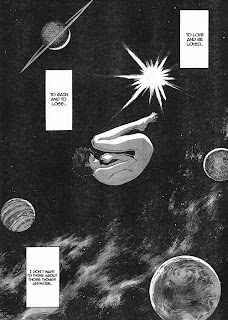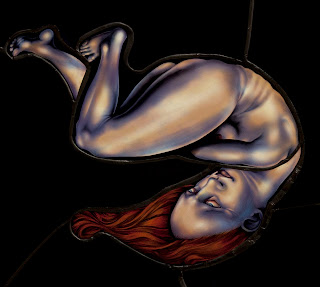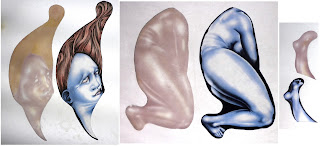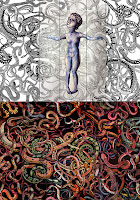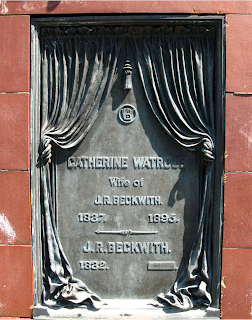
I had the occasion to write about a specific piece recently, “Mother and Child” from 2006. I figured I would share it on the blog.
Size: 34” x 23”
Materials: stained glass, sandblasted, engraved, vitreous
paint, cold
paint, assembled with copperfoil and displayed in a lightbox
Exhibition history:
“Burning Inside” solo show at Claire Oliver, 2007
"Judith Schaechter, New Parables in Glass", Claire
Oliver Gallery, 2008
"Pretty is as Pretty Does", Site Santa Fe, 2009
In 2006 we are in the midst of the conflict in Iraq.
Prior to that, in the early 2000’s, I had developed a strong
interest in the American Civil War (1861-1864) and had, for several years,
confined my reading to that subject alone.
I was struck in my reading by fact that, for the most part, men
sacrifice their lives and women? Well,
women sacrifice their sons (in the Civil War, there were no female soldiers).
How heartbreaking it is.
 |
| sketch (drawing, photoshop) for the piece |
When making “Mother and Child” I sought to express these
dual, entwined losses by referencing the “Good Shepherd” image.
I will say, that at the time I did not know
there was a named tradition for that pose (I am not religious)—I found out
later.
One thing about it I found
appealing is that it is a form of a pieta.
At the outset, I was merely selecting the poise for its poignancy,
implications of strength, sorrow and weariness.
As always I was highly concerned with the female figure’s
facial expression and posture. I tried
to convey the many emotions she might feel in her position; grief, pride, hope
that her son’s death was for a worthy cause, and a sense that she must be
strong just to go forth another day.
The surrounding imagery of the red tree was also
intuitive.
To me, it has come to
signify, as a plant often does, growth and life.
And yet its leaves also resemble flames so
perhaps, at least visually, it hearkens its own destruction.
The sun beats down on the scene in stylized
pink rays, which could be a sort of nuclear apocalyptic look or graphic
flag-like image.
I wanted a color as
unnatural and alarming for the sky as I feel war is as a condition for humankind.
The border is based on the yellow plastic “caution” tape
placed around construction sites and crime scenes.
 |
| another reference for the piece |
I do not typically work with overt political messages, this
window was one of my few attempts to address global events and I tried to do so
on a personal, one-to-one level and in a non-didactic way.


